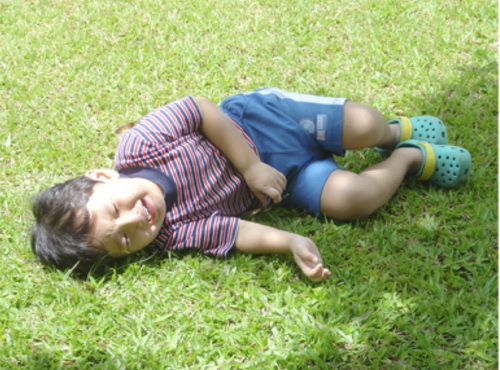
It’s easy for us to talk about our children when they behave, but it’s not so pleasant to admit when they don’t. Some of us have good-natured children; some of us may have difficult children. However, they are never perfect – and neither are we. As much as we love them, all parents feel like they could do with a little help sometimes. I know I do, so I’d like to share something I encountered in 2008.
I kept it so I could keep referring to it as needed. I filed it away so well, though, that I didn’t always know where to look when I wanted to review it. Voila, I stumbled upon it today. It rang true then and it still rings true now, despite the fact that both my children are five years older and I should be that many years wiser too.
What I’ve had is a handout, some notes taken by a Montessori teacher based on a book is called “Transforming the Difficult Child: The Nurtured Heart Approach” by Howard Glasser and Jennifer Easley, written in 1998. The parenting objective that is addressed is the same as it is with all children: recognizing the value of each child as an individual, and transforming those children who challenge our patience and test our limits more than we would like for them to.
The method involves understanding our child, knowing how to communication effectively with them and setting limits. As can be expected with difficult children, they will certainly question our authority and test our limits. Once we accept this as an inevitable part of the relationship, it will become easier for us to assert what we need to. The main point of the method involves what Glasser calls the Three Stands. We need to find the right combination of structure that includes positive energy and effective limit-setting.
Stand One: Absolutely No!
I refuse to energize negative behavior.
Rather than react with elevated energy, attention, and relationship to disruptions and outbursts that distract children from their greatness, I will strive to neutralize negative behavior through immediate, concrete, and uncharged responses consistent with the harmonious environment I am creating… by way of a simple form of consequence called a “reset.”
Stand Two: Absolutely Yes!
I will relentlessly energize the positive. As much as possible, I will work immediately to identify, describe, and express appreciation for steps, large and small, a child takes in manifesting his or her positive choices and intrinsic greatness. I will actively initiate opportunities for children to be successful.
Stand Three: Absolute Clarity!
I will maintain total clarity about rules that demonstrate fair and consistent boundaries. I will consistently enforce rules and provide immediate consequences through resetting each time a rule is broken. I will recognize the child in the moment they have reset and create that next moment as an opportunity for success.
The final objective with this parenting method is to transform our difficult children into self-regulating individuals. We hand over the control to the child by compassionately trusting that they can arrive at the decision to control themselves without us having to tell them to do so. Children have to be “bombarded” with experiences of success. Although at first it may be external to them, through a process of time, integration and assimilation, success will come to be second nature to even the most difficult child.
With the dawn of readily-accessible info on the worldwide web, there is much more material to work with now than just the handwritten notes taken by one person over a decade ago. Learn more on Glasser’s website about his method for nurturing the difficult child.
Dana is the beijingkids Shunyi Correspondent. Originally from the Philippines, she moved to Beijing in 2011 (via Europe) with her husband, two sons and Rusty the dog. She enjoys writing, photography, theater, visual arts, and trying new food. In her free time, she can be found exploring the city and driving along the mountain roads of Huairou, Miyun and Pinggu.
Photo by Dana Cosio-Mercado



